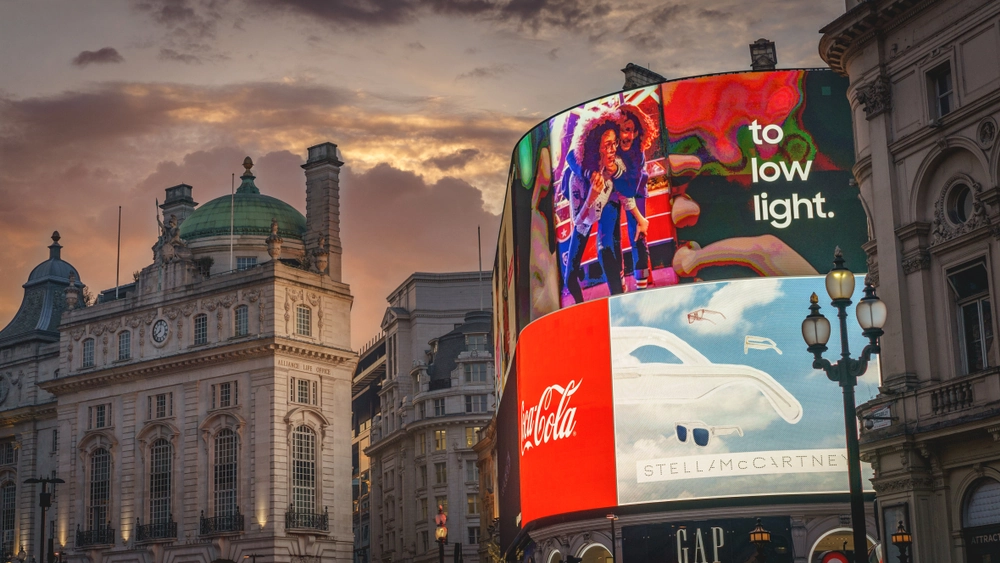
Gaming: A new horizon for brand collaborations

By Ben Travers, Joe Bryon-Edmond
28 Apr 2025 | 6 minute read
In this article, we explore emerging trends for brand collaboration in the gaming space as brands look to opportunities in this maturing sector.
The gaming landscape offers an exciting opportunity for emerging and established brands to connect with their audiences in new ways by giving brands the power to communicate their brand story and identity in fresh and innovative ways. In turn, this can open up an entirely new audience to brands that opt to venture down this path.
Gaming has the potential to bring together brands from all sectors, with high profile historic fashion brands such as Gucci amongst the early adopters. This collaboration works both ways, with IP holders from within the games world increasingly finding new collaborations which help them to connect in similar ways, many of the biggest recent film releases have for example, been based on IP which began life in video games, whilst collaborations which see gaming characters on merchandise is a well-established revenue stream.
In a similar way, gaming can give consumers a greater sense of engagement, community and even ownership over a brand, which few mediums can match. Whilst this creates incredible opportunities, the gaming landscape also creates unique concerns which brands will need to navigate. In this article, we consider some of those key issues.
Trade mark registrations
this protection is sufficient to safely enable gaming collaborations.
Just like with any other brand collaboration, brands will need to ensure that they have registrations in place for the products/services which result from the collaboration. When it comes to gaming, a key first step will be to ensure that registrations are in place covering assets in a virtual environment.
For example, a clothing brand would expect to have a trade mark registration in class 25 (of the trade mark classification system) for clothing. A gaming collaboration, which sees a virtual representation of the brand and products should also consider obtaining registrations in, for example, class 41 (for entertainment services). This is because a virtual representation of a real world product in a gaming environment is seen as an entertainment service, not just a virtual representation of a physical good. Further, virtual items, such as clothing purchased for an avatar may be seen as software (which would require a trade mark registration in class 9).
Of course, the situation is the same, but in reverse, when a gaming business looks to produce real world items. Their trade mark registrations will need to cover those real-world items and not just their virtual counterparts.
Having these registrations in place early, and before any collaboration will be vital
Consideration will also need to be given to the territories in which protection is obtained. By default, gaming services are international. This may mean that brands get exposure in new territories, as well as enhancing their presence in existing markets.
This means that a traditional strategy towards international brand protection may not be appropriate. Whilst being sure to factor in commercial considerations and a cost/benefit analysis, a games collaboration may not only require an increase in the range of goods and services for which brands are registered but also the territories in which they are registered.
User Generated Content (UGC) – quality control and user interaction
For many brands, concerns around how users will interact with their content will be key.
The freedom games offer users to interact with virtual environments is part of what makes gaming such a potentially powerful ally to brands. Similarly, when gamers are used to interacting with virtual content originating from a game, it will be important that any real-world manifestations of this IP are true to their experience of the original. Whichever side of the deal you are on, quality control is going to be essential and it is right that brands consider the associated risks.
To some degree, these risks can be mitigated by avoiding games where content which is inconsistent with the core brand will be present. For example, you would not expect to see an alcohol brand associating itself with a driving game.
Even with careful platform selection, issues can still arise as platforms and their communities evolve. A game or brand which has positive connotations today may become controversial tomorrow. The reverse is also true, but with effective terms in place, a game developer can retain an element of control over unknown and potentially unforeseeable situations such as this and should be able to remove a damaging brand from their game much easier than a producer of tangible products can dispose of real-world merchandise which carries a reputational risk due to brand association.
Brands sometimes enter into collaborations without the necessary contractual provisions in place, and without thought to any long-term implications of the collaboration. This is risky, as it can lead to brand dilution/devaluing and reputational issues. The risks can be even greater in the gaming sector where users have more freedom over how they interact with brands. Similarly, a "real-world" brand which has developed a negative reputation could tarnish a user's experience when that brand appears in-game.
It is, of course, in both party's interests for any such collaboration to be successful, but keeping one eye on the "worst case scenario" is a sensible approach to take. So, from the point of view of both parties, it is essential that contractual obligations are clearly set out, enabling each party to maintain trust and reputation in their brand whilst providing enough freedom to fully benefit from the collaboration.
Understanding your audience
Gamers are looking for a different experience when interacting with brands on a gaming platform. They often want much higher levels of engagement than they may get, for example, from a simple product placement in a film or TV show. They do not, largely, want the brand to be a passive part of their experience. They want the experience to be interactive.
There is, however, a balance to be sought between this higher level of engagement, and not detracting the gamer from the overall experience of the game. As alluded to above, the best collaborations arise where there is an element of synergy between the game and the brand – simply dropping a brand into a popular game does not necessarily guarantee a successful collaboration; in fact, it can have the opposite effect and could result in reputational damage to the brand. This is why it is sensible for brands to ensure that they maintain an element of control over their IP within the collaboration.
For some brands, this means creating a "sandbox" environment within an existing platform. This may be an area where the brand can have more control over content than they would in other areas of the game, ensuring that the brand can shape the environment and curate the users experience. This can allow the brand to try new things, develop ideas and then, if they are successful in the "sandbox" they could be rolled out more widely across the platform.
For platforms which are able to offer this, this can be a win-win for both the brand and the gaming platform. The user can experience the game environment and the brand in a new way, yet the brand has enough control to enable it to be more relaxed in allowing users to interact with and even create content using brand assets.
In some instances, these type of "sandbox" environments can also be used for brands to test out the popularity of potential real-world products, before bringing them to market – this can be hugely beneficial for brands and further highlights the benefits of collaborations within the games industry.
Get in touch
For more information on this topic or to discuss IP issues relating to gaming, brands and brand collaboration, please contact Ben Travers.












